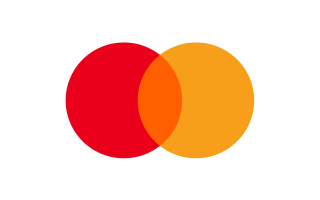一. The disruptive advantages of 3D printing for small-batch customization
1.Breaking the limits of economies of scale
Traditional model: injection molding, casting, etc. rely on molds, and the cost of small-batch production is extremely high (mold costs account
for more than 50%).
3D printing: No molds are required, and the cost of a single piece is independent of the batch, which is particularly suitable for small-scale
production of 10-1000 pieces.
Case: Invisalign, a brand of invisible braces, achieves customization for each person through 3D printing, and the cost is only 1/3 of traditional
orthodontics.
2.Design freedom and rapid iteration
Complex structures (such as topological optimization, hollow lightweight) can be formed in one go, while traditional processes require a
combination of multiple processes.
Case: Adidas 4D running shoes use 3D printing to achieve a grid structure in the midsole, reducing weight by 40% and shortening the R&D
cycle by 6 months.
3.Distributed manufacturing and supply chain reconstruction
Localized production reduces warehousing and logistics dependence and responds to supply chain disruption risks such as epidemics.
Data: McKinsey predicts that 3D printing will reduce global logistics demand by 15%-25% in 2030.
二. Current limitations of disrupting traditional manufacturing
1.Material and cost bottlenecks
The cost of metal printing materials is as high as 3-5 times that of traditional forging (such as titanium alloy powder $300+ per kilogram).
Plastic printing strength is still lower than injection molded parts (weak interlayer bonding).
2.Production efficiency ceiling
The production capacity of a single device is limited, and high-speed printing (such as Carbon's CLIP technology) has not yet been popularized.
Comparison: Injection molding machines can produce thousands of pieces per hour, while 3D printing can only complete dozens of pieces in the
same amount of time.
3.Lack of industry standards and certifications
Non-destructive testing standards for printed parts in aerospace, medical and other fields are still being improved.
Case: GE Aviation 3D printed fuel nozzles took 5 years to pass FAA certification.
三. Fields that have been disrupted and future critical points
Fields that have been disrupted (replacement rate exceeds 30%)
Medical implants: personalized products such as titanium alloy bones and crowns, traditional processes cannot compete.
Prototype development: 90% of design verification in the automotive/electronics industry uses 3D printing.
Cultural and creative customization: Museum derivatives and personalized jewelry are produced on demand.
Potential areas of disruption in the next 5-10 years
Spare parts supply chain: Siemens has used 3D printing to repair discontinued parts in power plants, and inventory demand has dropped by 70%.
Prefabricated building parts: MX3D printed steel bridges in the Netherlands, and Yingchuang 3D printed earthquake-resistant houses in China.
Food industry: 3D printed meals with personalized nutrition customization (such as Biozoon soft food).
四. Symbiotic relationship with traditional manufacturing
In the short term, it is more likely to form a **"hybrid manufacturing" ecosystem**:
Complementary scenarios:
3D printing of complex parts + traditional processes to produce main structures (such as aircraft turbine blades + fuselage riveting).
Traditional processes mass-produce standard parts, and 3D printing handles after-sales customization needs (such as car modification parts).
Data support:
Boston Consulting predicts that 3D printing will account for 5%-8% of the global manufacturing output value in 2030, but traditional processes will still
dominate more than 80% of the market.
五. Critical point conditions for disruption
Technological breakthroughs:
Multi-material mixed printing accuracy<0.01mm (currently 0.1mm).
Printing speed increased to 10 times the current level (such as Seurat laser technology).
Cost reduction:
Metal powder costs dropped to less than $50/kg (large-scale recycling technology required).
Policy promotion:
Carbon emission tax forces the transformation of subtractive manufacturing (3D printing material utilization rate exceeds 95%, traditional
machining is only 50%).
Conclusion: Gradual disruption, not comprehensive replacement
3D printing will continue to erode the share of traditional manufacturing in small batches, high complexity, and high added value, but large-scale
standardized production is still dominated by traditional processes. Its disruptive nature is more reflected in:
Promoting the transformation of manufacturing to "mass customization" (such as Nike By You personalized shoes).
Reconstructing the global supply chain (from centralized to distributed).
Give birth to new business models (such as cloud manufacturing platform Xometry integrating global 3D printing capacity).
The real disruption in the future may start with an integrated device that can print metal, plastic, and circuits at the same time - this may be the key
to "Industry 5.0".
TRONXY Official Website: https://store.tronxy.com/






